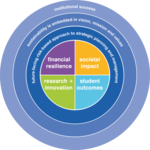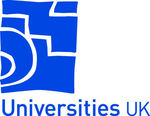Universities today face unprecedented levels of risk and uncertainty – but there is a solution
24th October 2018
The EAUC is today launching a new Guide that highlights the business benefits of sustainability and explains why it is key to the success of higher education institutions.
The Guide - ‘Sustainability: Key to Long-term Institutional Success’ - was developed by EAUC and the University of Edinburgh, in partnership with the Committee of University Chairs (CUC), Rathbones, Universities UK and Advance HE.
It gives guidance and examples of how universities that embed sustainability in their vision, mission and values can realise a host of business benefits across four key pillars of institutional success: Financial Resilience; Student Outcomes; Research and Innovation, and Societal Impact.
Iain Patton, CEO at the EAUC, said:
“Universities face unprecedented levels of risk and uncertainly, as well as a myriad of strategic opportunities. This Guide equips Governors to challenge the senior team to ensure they adopt a future facing, risk-based approach to planning and management, which can deliver institutional success in a resource, constrained, competitive and volatile environment.
Vice-Chancellors are recognising that students, staff and local communities are looking to universities to behave in a socially responsible and sustainable manner. Just last week 5 leading Vice-Chancellors formally signed the UK Government’s Emissions Reduction Pledge in demonstration of this. This guide is aimed directly at those on university boards that are yet to be convinced.”
Chris Sayers, Chair of the Committee of University Chairs (CUC), said:
“We recognise the importance of sustainability in the context of an institution’s financial sustainability, its competitive position, and the wider context of how an institution plays its part in supporting the global agenda for a strong, healthy and just society living within environmental limits.
We welcome this publication and are grateful to all of those who have contributed to its development. I believe that by considering the ideas and examples set out in this document, universities will be well placed to effectively prepare their institution for the sustainability challenges of the 21st century.”
Matt Crossman, Engagement Manager at Rathbone Greenbank, said:
“Good governance is critical to the success of higher education institutions, with governors charged to ensure the sustainability of their institution. While a focus on financial viability is key, adopting a fuller definition of sustainability to include people and planet is necessary to secure long-term success.
Universities contribute to addressing the societal challenges embedded in the Sustainable Development Goals through their teaching, research and public service. Aligning the long-term strategy of your institution to better serve global society can do more to secure institutional resilience than any amount of risk-based due diligence. Put simply, sustainability is the key to long-term organisational health.”
You can view the full Guide at
https://www.sustainabilityexchange.ac.uk/a_guide_for_governors
ENDS
Notes to Editor
About EAUC
The EAUC represents institutions with over 2 million students and nearly 400,000 staff with a spending budget of over £25 billion. We exist to lead and empower the post-16 education sector to make sustainability 'just good business'. For more information, visit
www.eauc.org.uk or follow us on Twitter
@TheEAUC
Media Contact
Media and Campaigns Officer - Rosie Saban –
[email protected] - 01242 714321










 Except where otherwise stated, content on this site is
licensed under a Creative Commons Attribution 3.0 License.
Except where otherwise stated, content on this site is
licensed under a Creative Commons Attribution 3.0 License.
